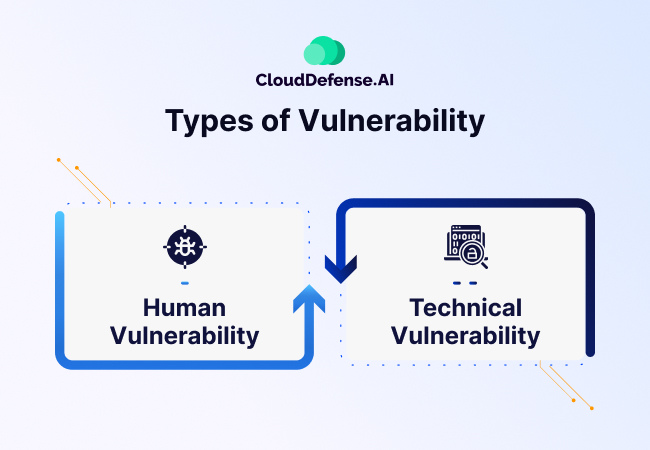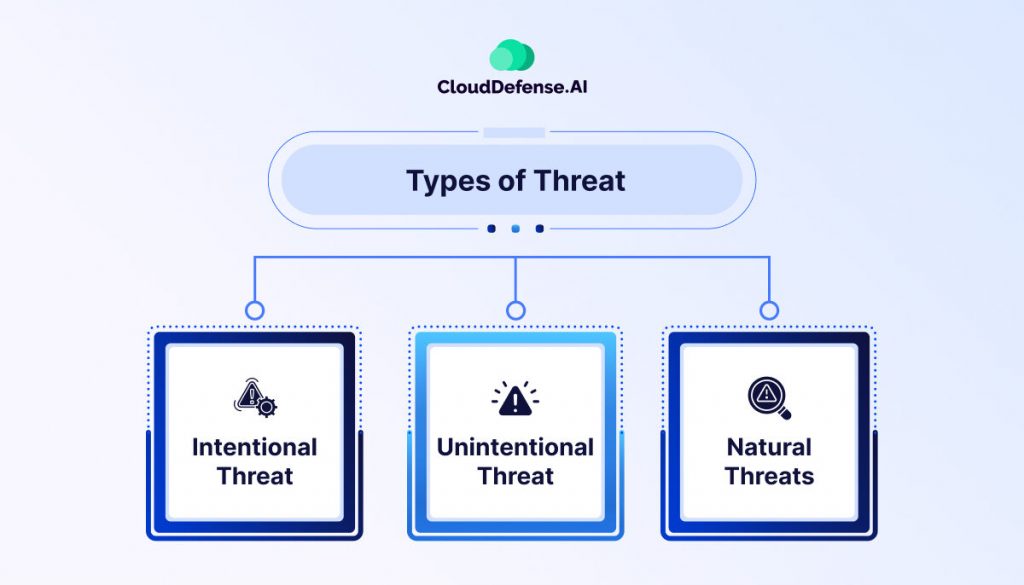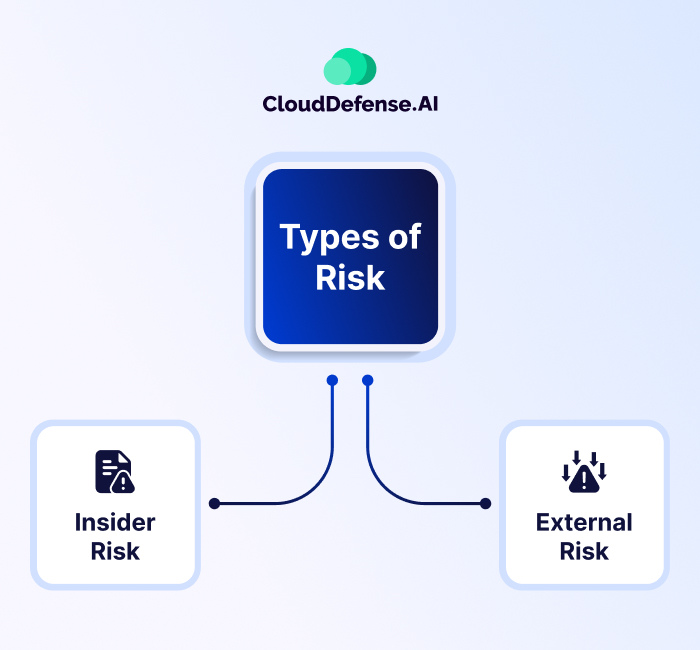Risk, Threat, and Vulnerability are three fundamental terms in the realm of cyber security. It is a common misconception in people to think that these terms are synonymous. They are interconnected but are different.
To briefly describe, a threat is a circumstance or a potential action that can cause damage to an IT infrastructure. A vulnerability is a weakness in the infrastructure that the threat can exploit. Lastly, a risk is the probability of a threat using a vulnerability to harm an organization.
As more people adopt DevSecOps best practices, it is essential to understand the differences between these three terminologies: Vulnerability vs. Threat vs. Risk.
What is Vulnerability in Cyber Security?
A vulnerability is a medium that threats use to access a system. Vulnerabilities can be any weakness in a component of a cyber strategy, networks, databases, devices, system settings, software, or even basic processes that run in a company.
Let’s consider leaving the windows of your house open. This is a vulnerability that can be used by threat actors like robbers to steal your prized possessions. Vulnerabilities in systems function the same way.
Cyber attackers use these flaws to easily bypass the security features of a company and get inside the system. Though vulnerabilities can be patched, an undetected exposure is just a ticking bomb waiting to explode.
Types of Vulnerability in Cyber Security

There are two primary forms of vulnerabilities in organizations. Humans or technicalities either cause these in the system.
- Human Vulnerability: Vulnerabilities that open up due to human errors are generally termed human vulnerability in an IT environment. Often, employees in a company fall for phishing, ransomware, or other malicious attacks that can prove to be fatal for a company.
- Technical Vulnerability: Technical vulnerabilities are often created due to an error in one of the components of an IT environment. It can be a misconfiguration or even poorly developed software that can provide easy access to threat actors.
What is Threat in Cyber Security?
A threat is a harmful act that has the intent of causing harm to an organization. A perfect threat definition would be the ability of an actor to gain control of a system. The act is carried through by exploiting the company’s cyber defenses or infrastructure vulnerabilities.
In contrast to popular opinion, threats to an organization do not always come externally. It is widespread for companies to have employees who are either dishonest or careless and might open up vulnerabilities intentionally or unintentionally. Threats in cyber security can cause a company to sustain financial, legal, and reputation damage.
Types of Threat in Cyber Security

Cyber threats to organizations may come in various types, including ransomware, phishing attacks, and malware. Threat actors use various vulnerabilities and infiltrate the system using the mentioned methods. Cyber threats to a company can have three categories.
- Intentional Threat: Remember us mentioning malware, ransomware, and phishing attacks? Using these methods to affect or harm an organization directly is known as an intentional threat. Intentional threat actors have the potential and capability to cause severe damage to a company for personal gains.
- Unintentional Threat: Unintentional threats are situations created by human errors or lapses in security. A good example is leaving sensitive information somewhere others can access it. Or not patching and updating the firewall and antivirus software.
- Natural Threats: A company’s assets can also be damaged by natural events such as fires, hurricanes, or thunderstorms. This threat might not be related to cyber security, but the category is still essential to consider.
What is Risk in Cyber Security?
A risk in cyber security is the potentiality of a threat exploiting a weakness or vulnerability in an IT environment to cause it harm. Risk is calculated by measuring the likelihood of a threat affecting a company as well as the magnitude of damage it might cause.
Remember the window example? The act of leaving your window open (vulnerability) increases the risk of a robbery at your house (threat). Cyber security experts choose to analyze risks and level them from high to low using risk management tools. This helps to determine which vulnerability needs to be addressed first, with the least risky vulnerability put off to be patched for a later time.
Types of Risk in Cyber Security

Risks to an organization can come in two different ways, internally and externally. Read on as we explain these in detail.
- Insider Risk: Employees play a big role in letting in cyber attackers by becoming victims of phishing or ransomware attacks. This increases the risk of your system being exploited. Attacks like these can be prevented with basic cyber security training. However, some employees also have malicious intent as they choose to harm the company to benefit themselves.
- External Risk: External risks are the potentiality of a threat coming from outside the system. This could be a threat actor trying to gain access to your system using malicious code or bring the system to a stop using DDoS attacks.
Vulnerability vs Threat vs Risk: Difference Between Vulnerability, Threat and Risk
Check out the table below, which summarizes the differences between these three terms.
| Vulnerability | Threat | Risk | |
| What Are They? | Weaknesses in a system that can be used to gain access to a system. | The act of exploiting vulnerabilities to damage a system is how you can define a threat. | The probability of a threat taking advantage of an exposure to cause harm is a risk in cybersecurity. |
| Can It Be Controlled? | It can be controlled by regular monitoring. | The system cannot control it. | It can be controlled by monitoring internal factors in the security system. |
| Intent Of Harm | Vulnerabilities may or may not have an intent of harming your system. | Threats or threat actors always have an intent to harm your system. | All risks possess an intent to harm your system. |
| Can It Be Fixed? | It can be fixed by using vulnerability management tools and resolving all the vulnerabilities. | It can be fixed by patching all the vulnerabilities in a system to block any potential threats from attacking. | This can be fixed by regularly monitoring the system, the employees, and failed attack patterns to improve defenses. |
| Can It Be Detected? | It can be detected using risk assessment tools. | It can be detected using vulnerability scanning tools. Penetration testing can be carried out for even better results. | It can be detected using threat monitoring tools. |
How to Calculate Vulnerability, Threat, and Risk
Calculating risk, threat, and vulnerability is possible by regularly monitoring and analyzing the amount of effect each of them is having on the system. The factor influencing these calculations is the amount of harm your system would need to sustain, even if one is used against you.
Vulnerability
There are a few different methods that you can apply to calculate vulnerabilities. They can either be a vulnerability management tool, or you can choose to test the effectiveness of your cyber security measure by hiring a security expert to carry out penetration testing. There are often vulnerabilities that vulnerability scanners cannot detect; this makes it important to carry out third-party threat and vulnerability assessments to get an unbiased review of your cyber defenses.
Threat
Threats can only be calculated based on the amount of damage they can cause or the potentiality of making use of a vulnerability in your system. This can be computed side by side as you measure the exposures in your system. Another great way to assess your system’s probable threats is by analyzing the industry. A threat to an industry similar to yours is also a threat to you.
Risk
Risk can be easily calculated using the formula below,
Risk to a system = (Probability of a threat exploiting vulnerabilities) * (Cost of the damage)
Risk assessment systems can measure this using qualitative and quantitative methods. Calculating risk is essential to bypass resources to the spot in your system that needs urgent attention. You can classify risks from high to low and then move on to mitigate them in that order.
Real-World Examples of Vulnerability, Threat, and Risks
Vulnerability Examples
- Outdated Software: In 2021, unpatched Apache Log4j vulnerabilities (CVE-2021-44228) allowed attackers to remotely execute code on systems using outdated versions of the software, impacting companies worldwide by enabling unauthorized access.
- Weak Password Policies: IoT devices that come with default or weak passwords can easily be accessed by attackers, exposing networks to unauthorized entry. This vulnerability is frequently exploited, leading to severe risks in home and enterprise networks.
Threat Examples
- Phishing Attacks: In 2021, Colonial Pipeline’s network was compromised through phishing tactics, enabling attackers to trick employees into providing access credentials, ultimately leading to the temporary shutdown of operations.
- Distributed Denial of Service (DDoS) Attacks: In 2016, a massive DDoS attack on Dyn DNS flooded the network with traffic, overwhelming servers and making major websites like Amazon and Twitter temporarily inaccessible to users.
Risk Examples
- Data Breach Risk: The Equifax data breach in 2017 occurred due to a lack of sufficient encryption and access controls, which resulted in the exposure of sensitive information for millions of individuals, impacting financial and personal security.
- Insider Threats: In 2023, Tesla experienced a major data breach when two former employees leaked 100 GB of sensitive information, including the personal data of over 75,000 individuals. This breach highlighted the risk posed by insiders with access to confidential information and highlighted the need for data access controls.
Risk Management Best Practices
Risk management is essential for protecting your organization’s security by identifying, assessing, and addressing potential risks that could disrupt operations. The best approach ensures resilience against threats and supports business continuity. Here’s how to build a simple yet effective risk management plan.
Identifying Risks
The first step is identifying risks that could threaten your organization’s data, systems, and infrastructure. Regular assessments using tools like vulnerability scanners help you stay aware of potential weaknesses that need immediate attention.
Creating a Risk Response Plan
Once risks are identified, establish a response plan that details how to address each risk. This plan should include security policies and actions to take when threats arise, ensuring that your organization is prepared to respond quickly to any issue.
Using Risk Management Tools
Risk management tools play a key role in strengthening security. Tools like firewalls, IAM, and Vulnerability Assessment solutions protect against security incidents. Cloud security platforms like CloudDefense.AI offer real-time risk monitoring and automated threat detection to help keep your organization safe.
Training Employees on Security Awareness
Employees are a vital part of risk management. Training staff to recognize potential security risks makes them proactive defenders of the organization, helping reduce risks from phishing attacks, weak passwords, and other vulnerabilities.
Ongoing Monitoring and Updates
Risk management is an ongoing process. Regularly updating strategies, including patching software and reviewing security protocols, keeps systems protected against evolving threats. Continuous monitoring tools offer real-time insights into emerging risks, keeping you one step ahead.
Adopting DevSecOps Practices
Integrating DevSecOps in the risk management process means that security is built directly into development. By collaborating with development, operations, and security teams, organizations can identify and address risks during the development process, reducing the chance of vulnerabilities in deployed applications.
Conclusion:
A vulnerability, threat, or risk to your system can be very costly for your IT infrastructure. With rising cyber crimes and new methods being implemented by threat actors, it is necessary to understand the three terms and their differences to protect your organization from any harm.
Cyber threats are on the rise, making security security essential to protecting your IT infrastructure. Effectively managing vulnerabilities, threats, and risks requires a solution that not only addresses these elements individually but also integrates them into a holistic approach to security.
CloudDefense.AI is one such security solution, built to exceed traditional tools with an advanced suite of capabilities:
- Continuous, Agentless Assessment: CloudDefense.AI conducts ongoing monitoring across your entire environment without affecting performance, providing complete visibility across both cloud and on-premises assets.
- Smart Prioritization with Contextual Insights: Vulnerabilities are prioritized not solely on severity but on potential impact, allowing your team to focus on the most critical threats. This context-driven approach ensures faster, more strategic decision-making.
- Smooth CI/CD Pipeline Integration: Security is embedded from the start. Automated scans within CI/CD workflows detect vulnerabilities early, preventing issues from reaching production and ensuring a smooth, secure development lifecycle.
- Advanced Attack Path Analysis: CloudDefense.AI provides a detailed view of how vulnerabilities might be exploited together, delivering enhanced insight into potential multi-vector risks and reinforcing your defenses.
- Real-Time Threat Intelligence: Stay ahead of emerging risks with live CVE (Common Vulnerabilities and Exposures) updates and ongoing threat insights, ensuring you are always prepared against the latest threats.
- Customized Compliance and Reporting: Meeting compliance standards is simple with built-in support for regulations such as ISO 27001, SOC II, and GDPR. CloudDefense.AI automates compliance checks and provides clear reporting for smooth audit processes.
- Automated, AI-Driven Remediation: CloudDefense.AI doesn’t just detect issues; it guides your team through effective remediation with precision. AI-driven suggestions support quick resolution of vulnerabilities through patches, reconfiguration, and mitigation as needed.
- Asset Inventory and Monitoring: With continuous tracking of all assets, CloudDefense.AI ensures nothing slips through, providing you with complete control over your security posture.
Take Action Today
For unmatched security that actively defends your IT environment and simplifies risk management, CloudDefense.AI is the partner you need. Book a free demo today and see how CloudDefense.AI can transform your security approach.
FAQ
Below are some frequently asked questions on risk, threat, and vulnerabilities.
What is an example of an internal threat?
A good example of an internal threat in an organization can be an employee selling sensitive data that contains the company’s secret to a competitor. Another example may include an employee unintentionally clicking a phishing link, opening up access to the system.
Are all vulnerabilities equally critical?
All vulnerabilities seem harmful on paper, but in reality, most vulnerabilities cannot be exploited. This can be due to a need for more authority or the amount of skills needed to use them. Vulnerability management tools help assess the severity of vulnerabilities and mitigate the most critical ones first.
What is an example of risk avoidance?
An excellent example of risk avoidance measures for an organization can be not wanting to work with a third-party vendor that is not compliant with industry security standards. This reduces any risks of external threats from the vendor itself.
What Are Some Examples Of Risk Management Tools Used By Cyber Security Experts?
Cybersecurity experts tend to use a range of tools for upscaling their security efforts and counter vulnerability vs threat vs risk. This can include Firewalls, intrusion detection, vulnerability scanners, and risk assessment tools. There are many third-party vendors, such as CloudDefense.AI, that provide these.







